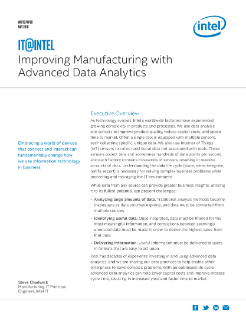Executive Overview
As technology evolves, Intel’s worldwide factories have experienced growing complexity in products and processes. We use data analysis and sensors to improve product quality, reduce capital costs, and speed time to market. Often a single tool is equipped with multiple sensors, each collecting specific, unique data. We also use Internet of Things (IoT) sensors to collect additional data not associated with tools. These sensors collect tens and sometimes hundreds of data points per second, and each factory contains thousands of sensors, resulting in massive amounts of data. Understanding the data life cycle (store, mine, integrate, notify, report) is necessary for solving complex business problems while protecting and managing the IT environment.
While data from any source can provide greater business insights, utilizing it to its fullest potential can present challenges:
- Analyzing large amounts of data. Traditional analysis methods become inadequate as data volumes explode, and data must be converted from multiple sources.
- Identifying useful data. Once integrated, data must be filtered for the most meaningful information, and correlations between seemingly unrelated data must be made in order to derive the highest value from that data.
- Delivering information. Useful information must be delivered to users in formats that are easy to act upon.
Intel has decades of experience investing in and using advanced data analytics, and we are sharing our best practices to help enable other enterprises to solve complex problems. With an optimized life cycle, advanced data analytics can help lower capital costs and improve process cycle time, resulting in increased yield and faster time to market.
